
As your kids grow older, they become more and more capable of understanding complicated concepts. During a discussion about earthquakes, they are fully capable of understanding why it’s important for engineers to construct buildings that will withstand an earthquake. Structural engineers are responsible for the lives and safety of the people that use the buildings they create. They exercise dominion when they plan carefully and use the best materials in their buildings. Your children may not be quite ready to dive into structural engineering, but they can apply their knowledge of earthquakes to a small structure with a simple experiment. In the Science 6 Teacher’s Edition, you will find an activity for constructing a structure out of pasta noodles and marshmallows. How well will their pasta structure stand up against an earthquake?
Materials for the Pasta Structure Activity
- 1 bag large marshmallows
- 1 box fettuccine noodles
- Foam base, approximately 8 in x 10 in (can be Styrofoam or other stiff foam)
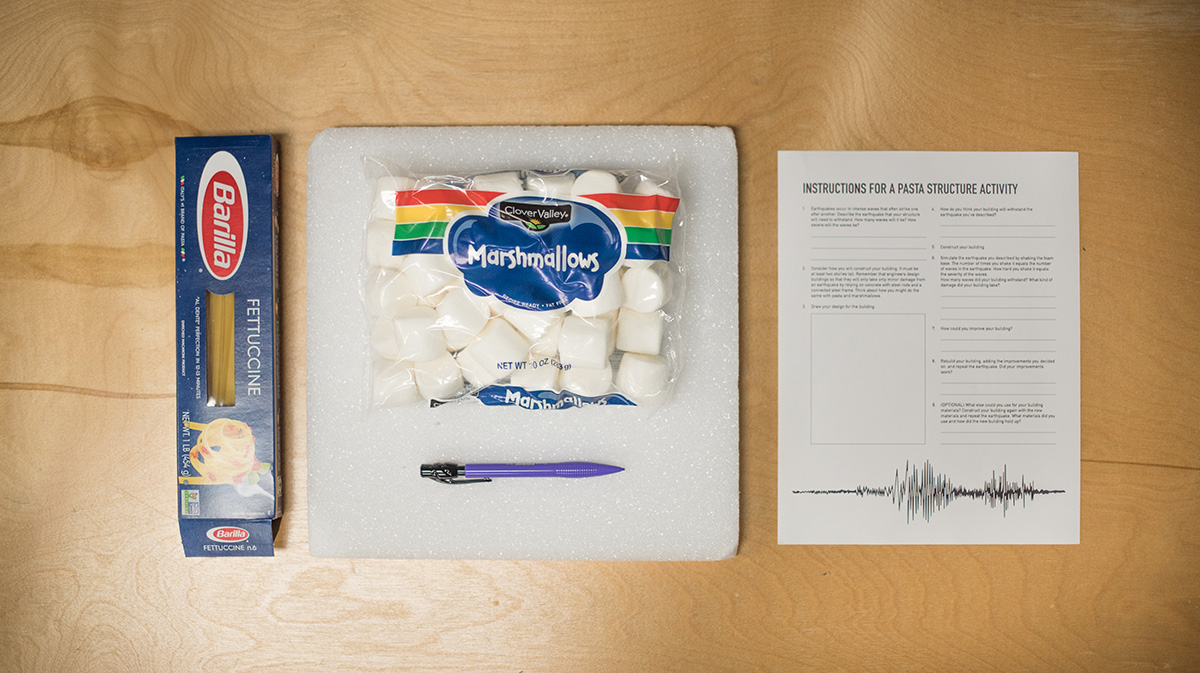 Doing the Activity
Doing the Activity
The goal is to design a structure that can withstand the force of an “earthquake.” And we’ll do it with just pasta and marshmallows. Your child will need to determine the number of waves in the earthquake and the severity of the waves her structure must survive. In order to simulate the earthquake, she will need to shake the foam base her building rests on. The number of times she shakes it represents the number of waves in the earthquake. How hard she shakes it represents the severity of the waves.
- Print out the pasta construction activity handout and have your child describe the earthquake her structure must survive. Have her complete items 1–4 on the handout before starting construction.
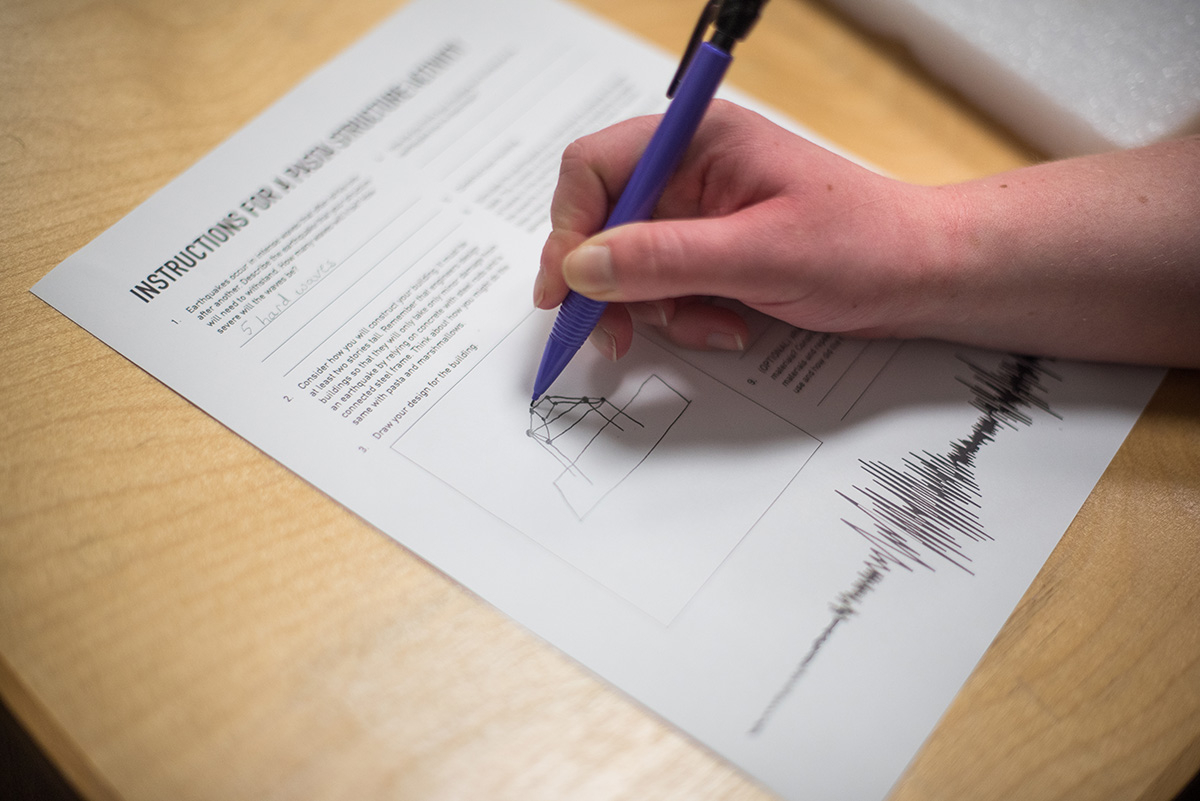
- Have her construct a building out of marshmallows and pasta with the foam base as the foundation. Her building should be at least two stories tall. She should consider the materials she’s using, the shape of her building, and how high it will be. All of these factors will affect how well her building will stand.
- Once she’s finished her pasta construction, she should simulate the earthquake she has described by shaking the foam base.

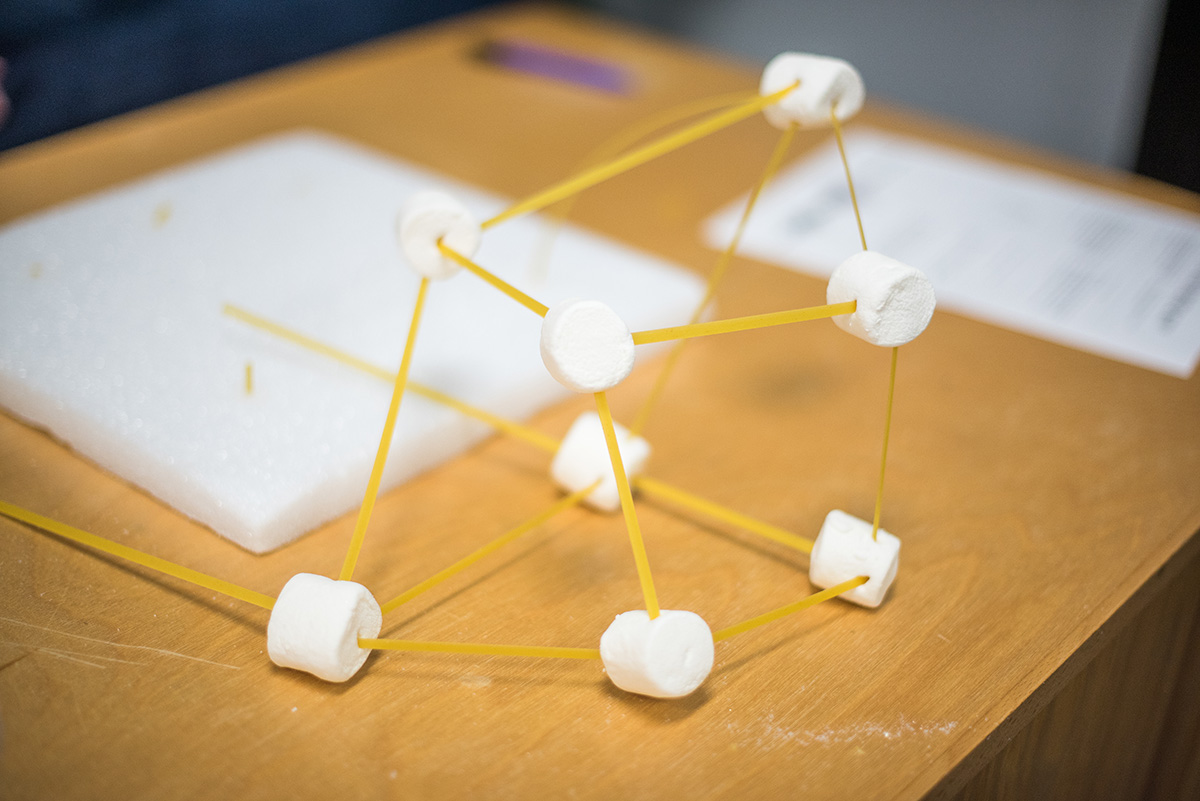
- Ask, “Did your building stay up? How many shakes was it able to take before it collapsed? What kind of damage did the earthquake do? Can you improve your design so that it will be able to survive the earthquake?” She should record on the handout any ideas she has for improvements to the structure.
- Have her repeat the experiment, applying her ideas for improvements. Ask, “Did the improvements make the structure better? Did it last longer during the earthquake?”
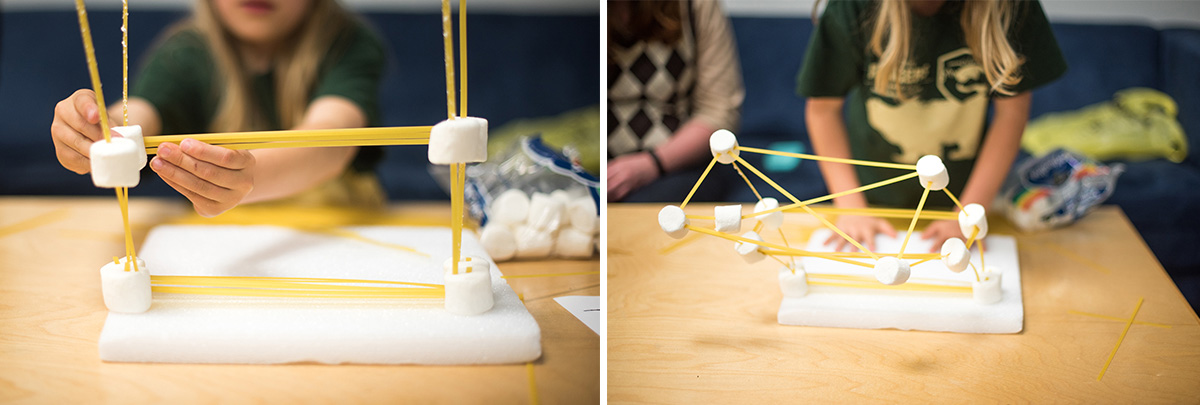
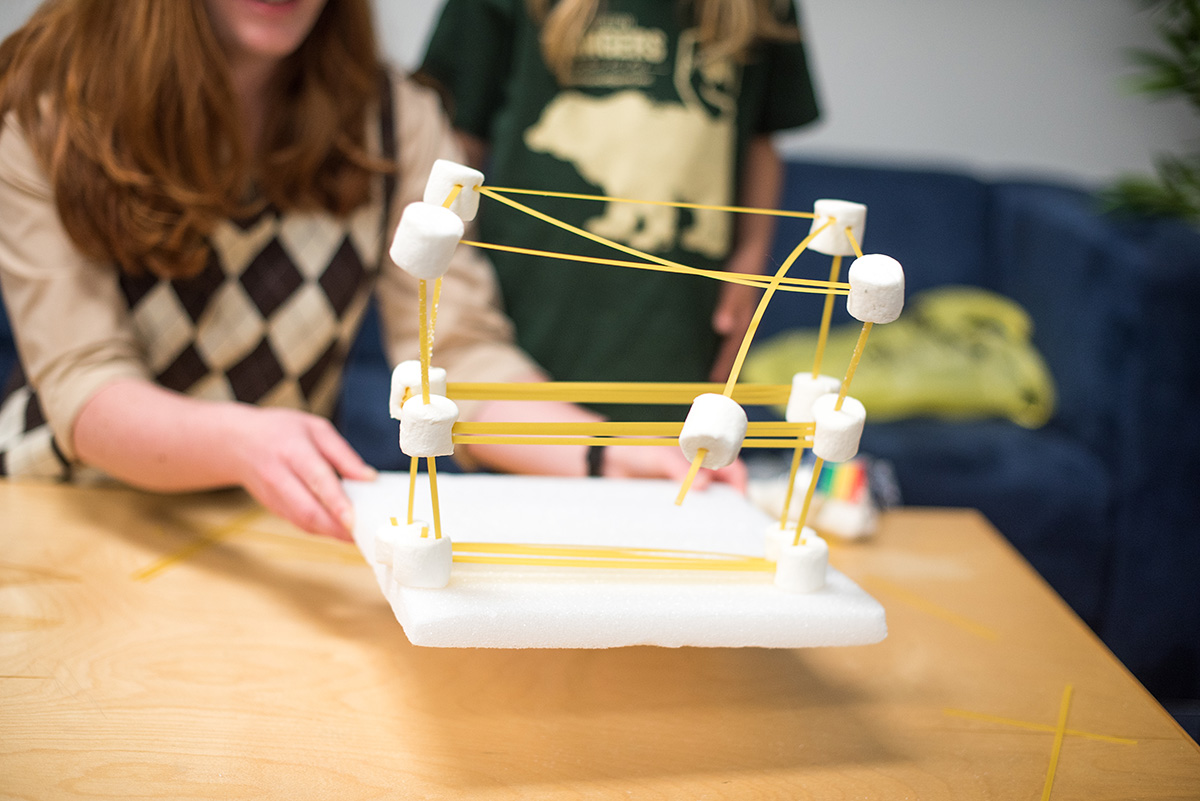 Taking It a Step Further
Taking It a Step Further
- Ask, “What other materials could be used for construction?” If you have the materials on hand, have her repeat the experiment and compare the new materials to the old ones.
This would be a great activity for siblings to work together on. Put your sixth grader in charge of construction and have younger and older ones follow her directions. She will need to exercise both listening and communication skills as she shapes her building.